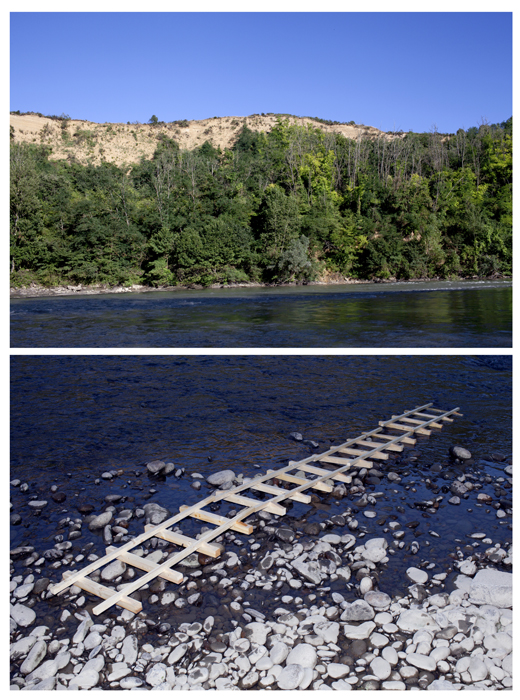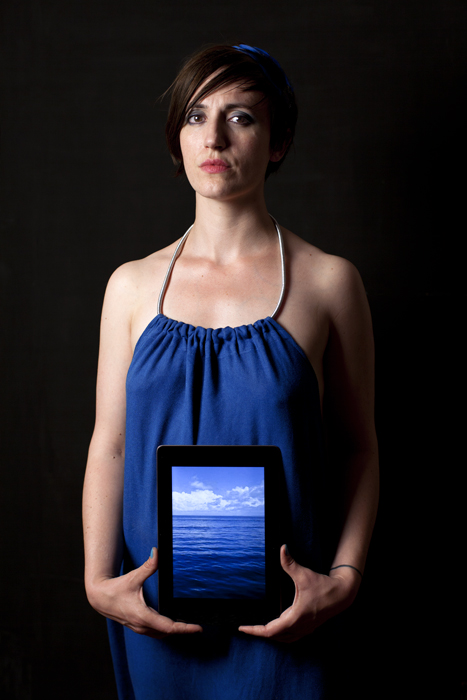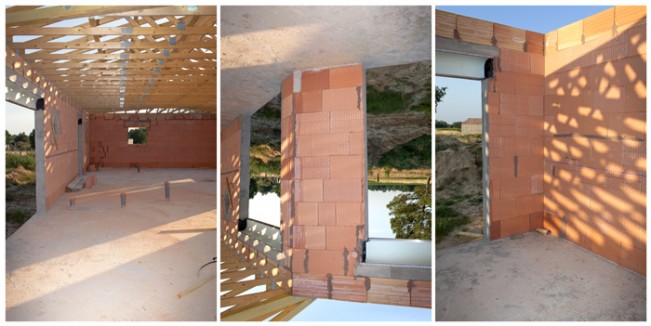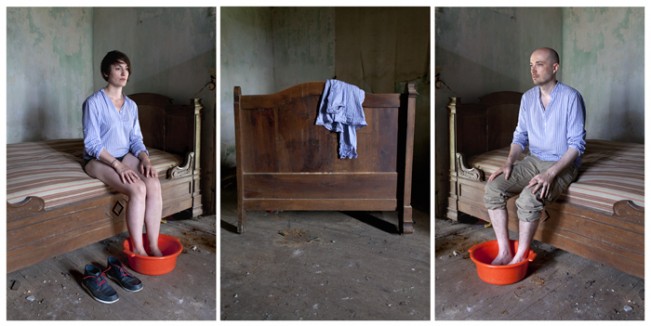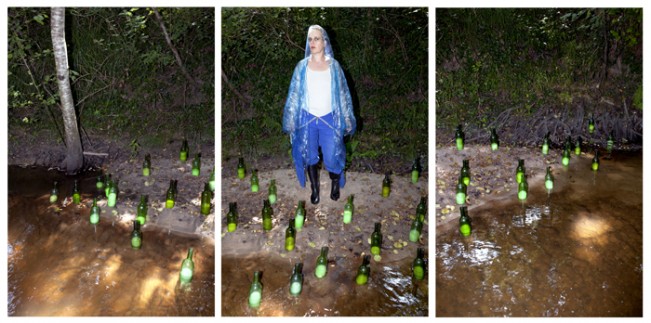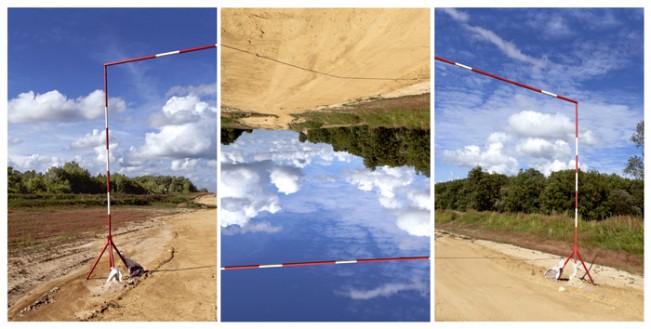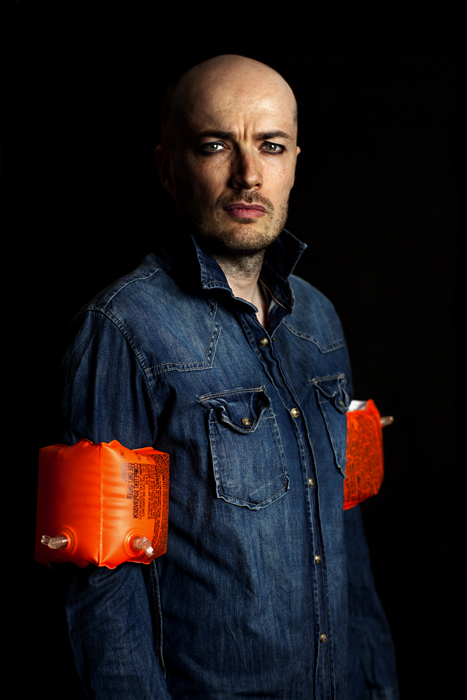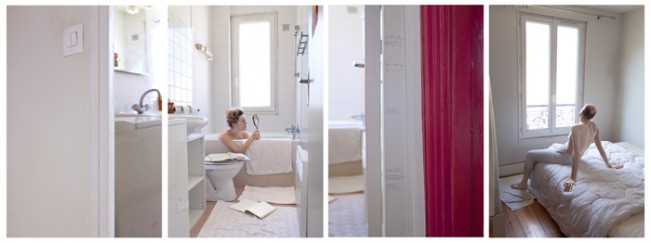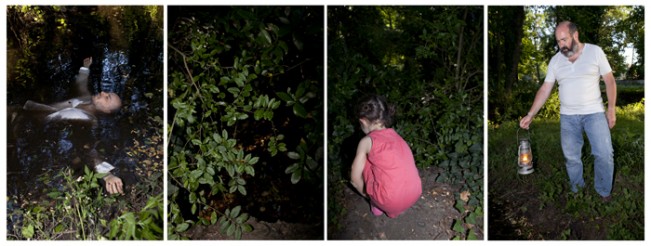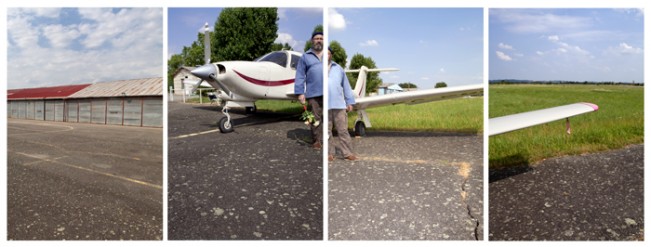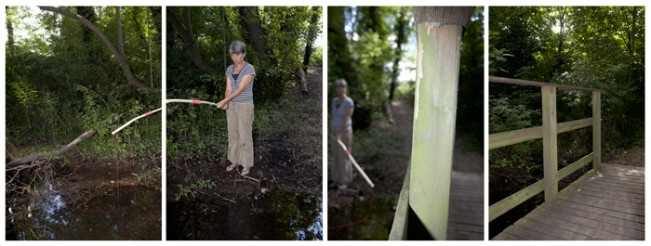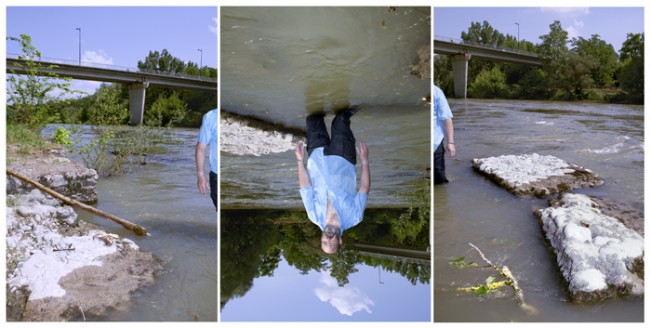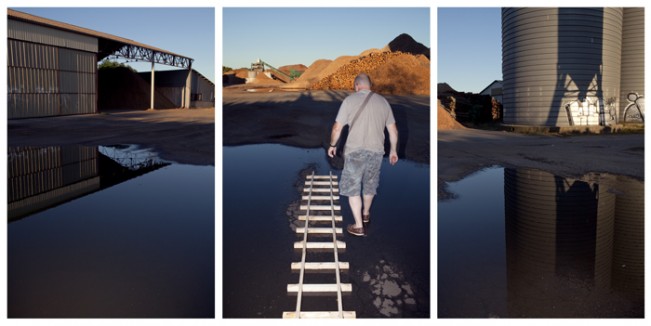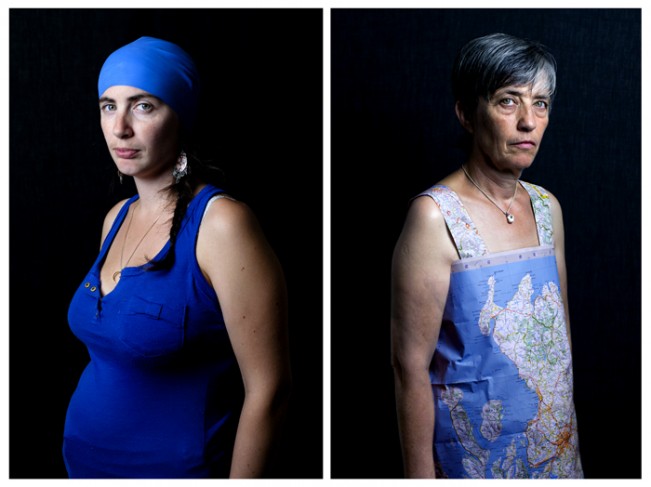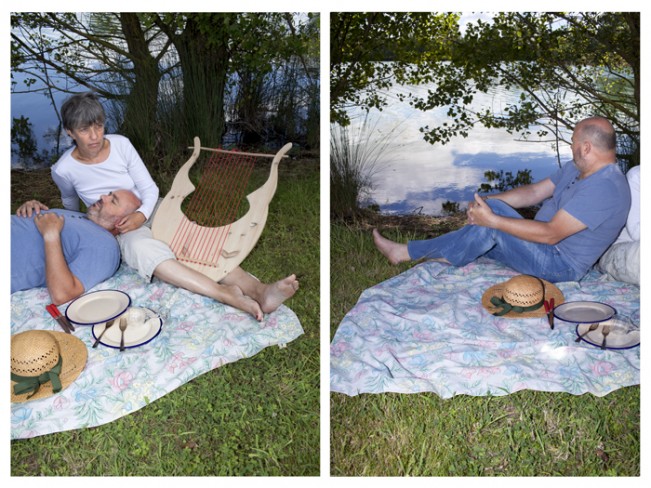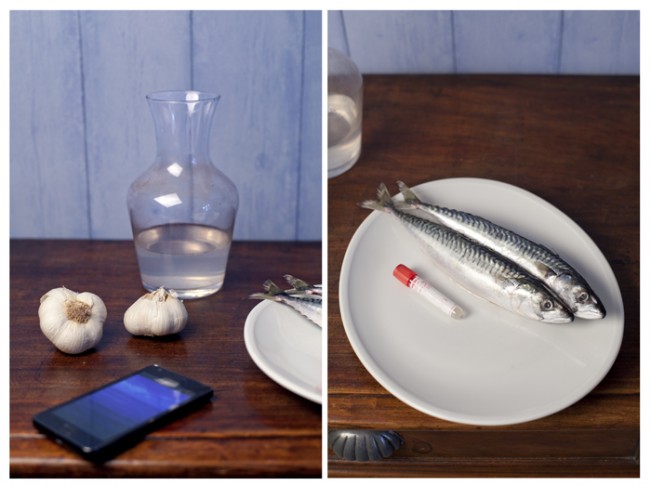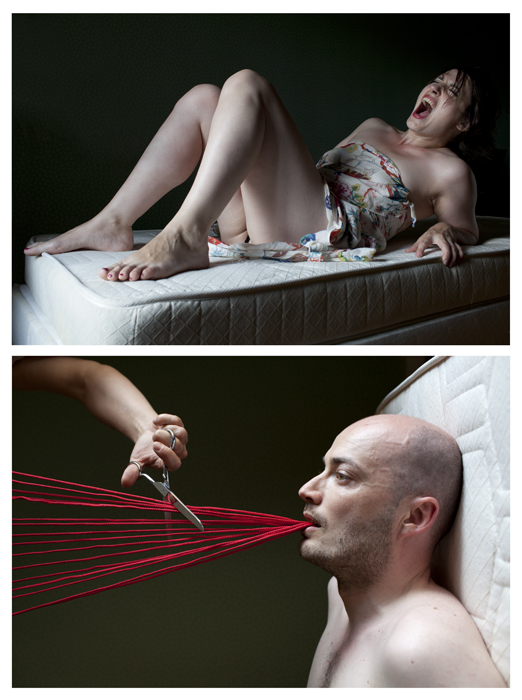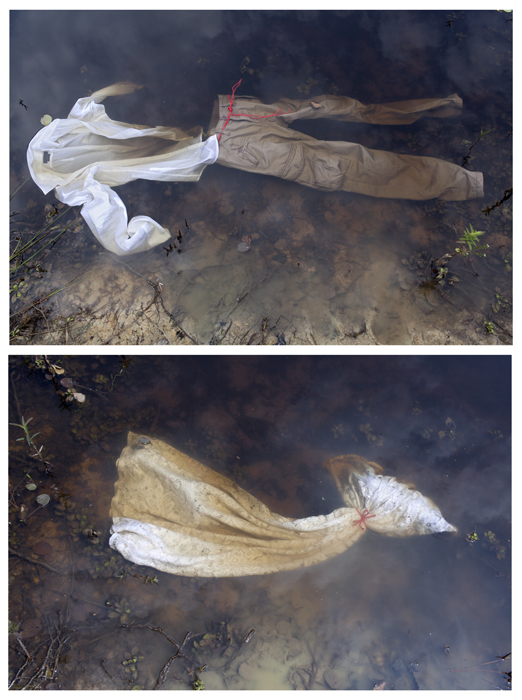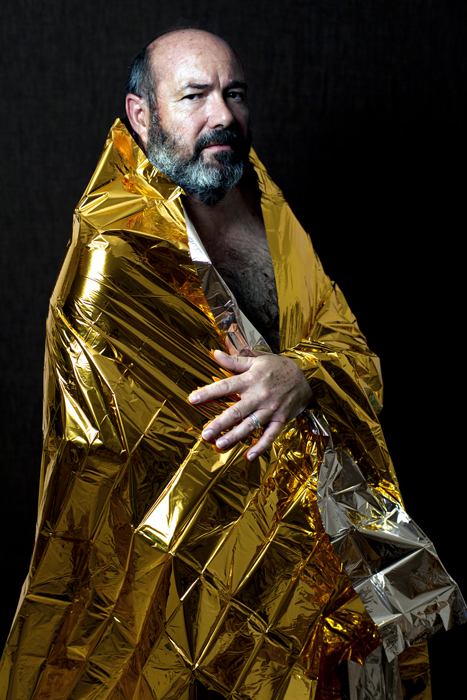Yann Datessen: Le Léthé
looking at work submitted to Lenscratch, written by Sarah Stankey
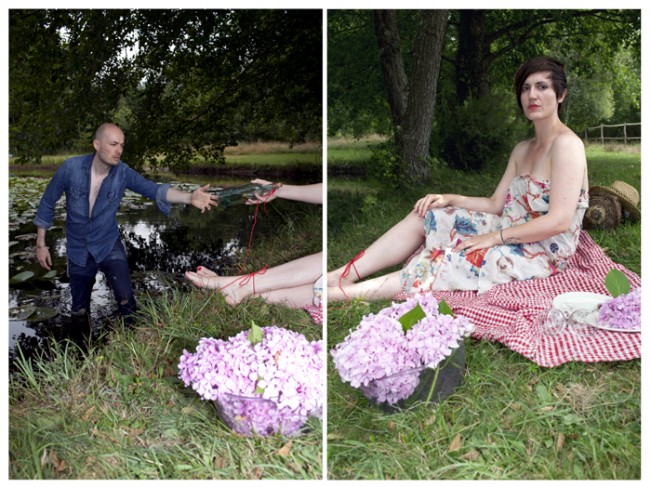
Yann Datessen‘s work about memory and relationships recalls aspects from art’s past. By using diptychs and staged portraiture I am reminded of many period of painting in art history. I find that Yann also uses symbolism to represent and recall past memories.
After studying History of Art, I initially dedicated myself to painting using photography as a tool for my sketches. Gradually, photography became the main focus of my work. Besides colour, I also wanted to keep the same «frame» of my previous experiments: that of the polyptych.
The association/confrontation of images has since been at the heart of my projects. I gather fragments, Fragment : ” These pieces of things which were broken, separated from their everything. “How to find this “everything”? A single cut? Is a single image enough? Maybe not. The choice of collection was then imperative: to combine my puzzle and exorcise a certain fear of the lack, silence, space.
To streamline also, to “inform” the life, my life: to find some material, classify it, order it, name it, on the principle of the herbarium, to frustrate the disorder and to hope for answers. As such, my “Correspondences” are attempts to make “sense”, between truth and sham, objectivity and subjectivity, these opposite strengths which mark history of the photography, an inventory against the absurd, the commonness, what has no explanation, a investigation on life.
Also, and in order to challenge the higher bid of contemporary polymorphic imaging, that of our societies of disguised and aesthetic information, I tend to question different ways of narration and rhythm, various codes of perception, various visual strategies. Between clues, matter and meaning on the one hand, and ellipses, space and enigma on the other, it’s necessary to put on the table all the aspects of a riddle for the credit note opposite and maybe better to solve it.
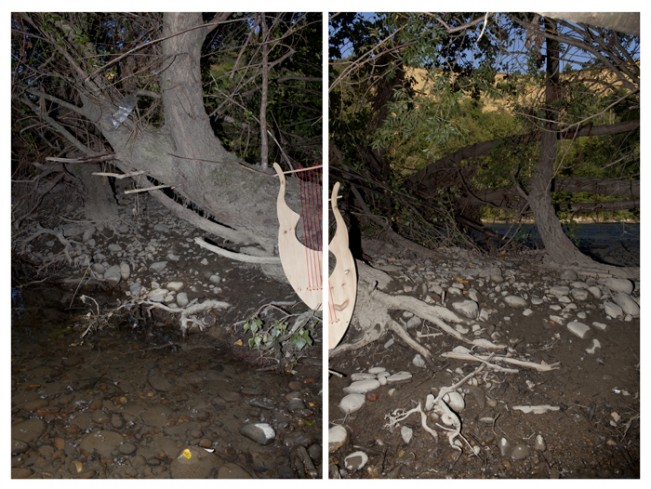
LE LÉTHÉ
We only recall beautiful memories, it’s what we say. But what about the others? Where do they go ? Regrets, sorrows, griefs, these dead branches under the water, which cling to the hull of our boats, where they eventually fail, on what side ? What is this undercurrent which took them far off, at the end of an estuary, perhaps in a sea, something cold and dark ?
With Styx and Acheron, Léthé is one of the three rivers of the Greek underworld. A sip of its waters allows a return, return to the surface among the living. The price ? Forgetting. Forgetting his past, his life, his loves, his family. Everything. Almost everything. Because will stay maybe a few bits of earlier happiness , flashes , feelings of “déjà vu”, but nothing which overshadows his new existence . We only recall beautiful memories, it’s what we say.
In Hell, some people choose to stay forever on the “wrong side ” of the bank, to keep beautiful things, both beautiful and painful, keep them forever in the dark, an eternity of melancholy among the damned. Other cross these waters to start all over again, leaving behind their identity.
Along the river of forgetfulness , among rushes and reeds, before making a decision : swallow a lot of dark water or stay dry, this series of 25 images is an invitation to navigate down a love story: its rapids, its turns, its geographical episodes, from the source to the mouth. Along the river of forgetfulness, cold poison from Tartarus, along the swollen vein of memories into which each of us has shed at least once, all kinds of liquid, I wanted to know what we keep from these stories, what we may well take away from the other.
Posts on Lenscratch may not be reproduced without the permission of the Lenscratch staff and the photographer.
Recommended
-
Salua Ares: Absense as FormNovember 29th, 2025
-
Ricardo Miguel Hernández: When the memory turns to dust and Beyond PainNovember 28th, 2025
-
Pamela Landau Connolly: Columbus DriveNovember 26th, 2025
-
KELIY ANDERSON-STALEY: Wilderness No longer at the Edge of ThingsNovember 19th, 2025
-
Jackie Mulder: Thought TrailsNovember 18th, 2025


